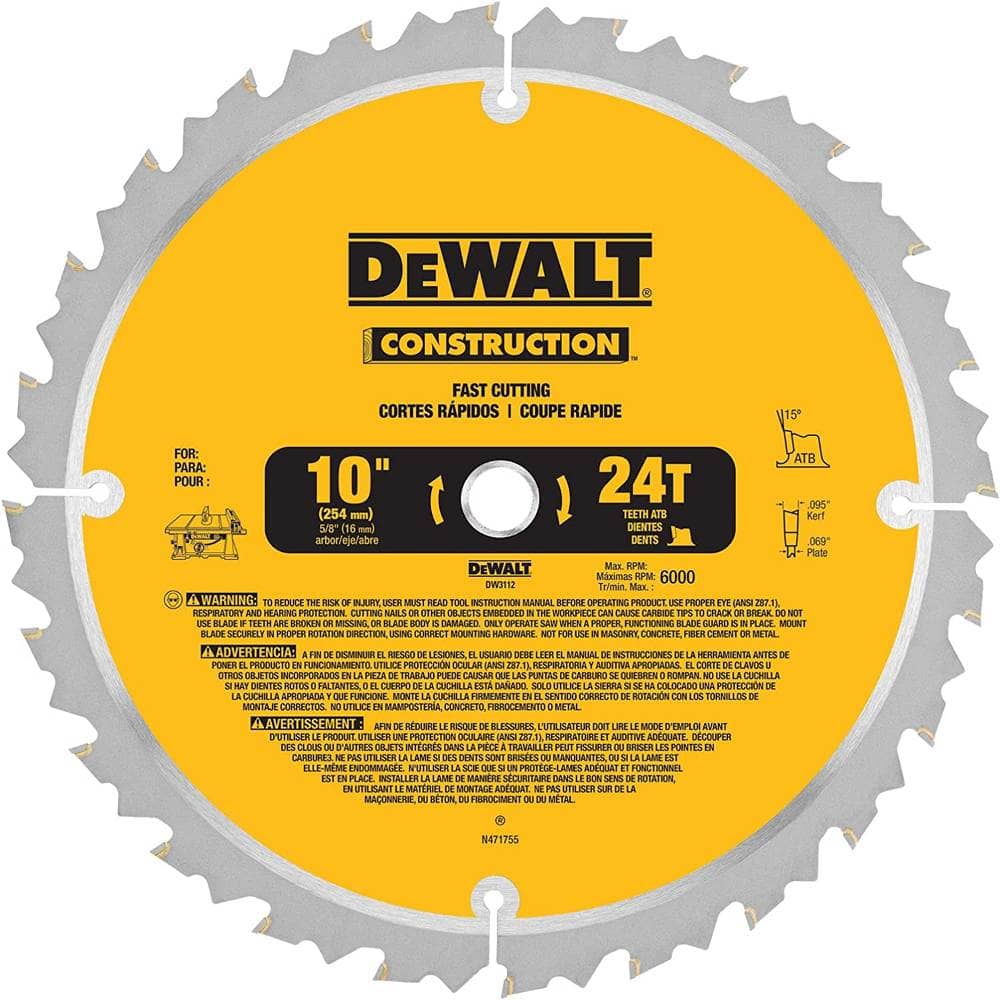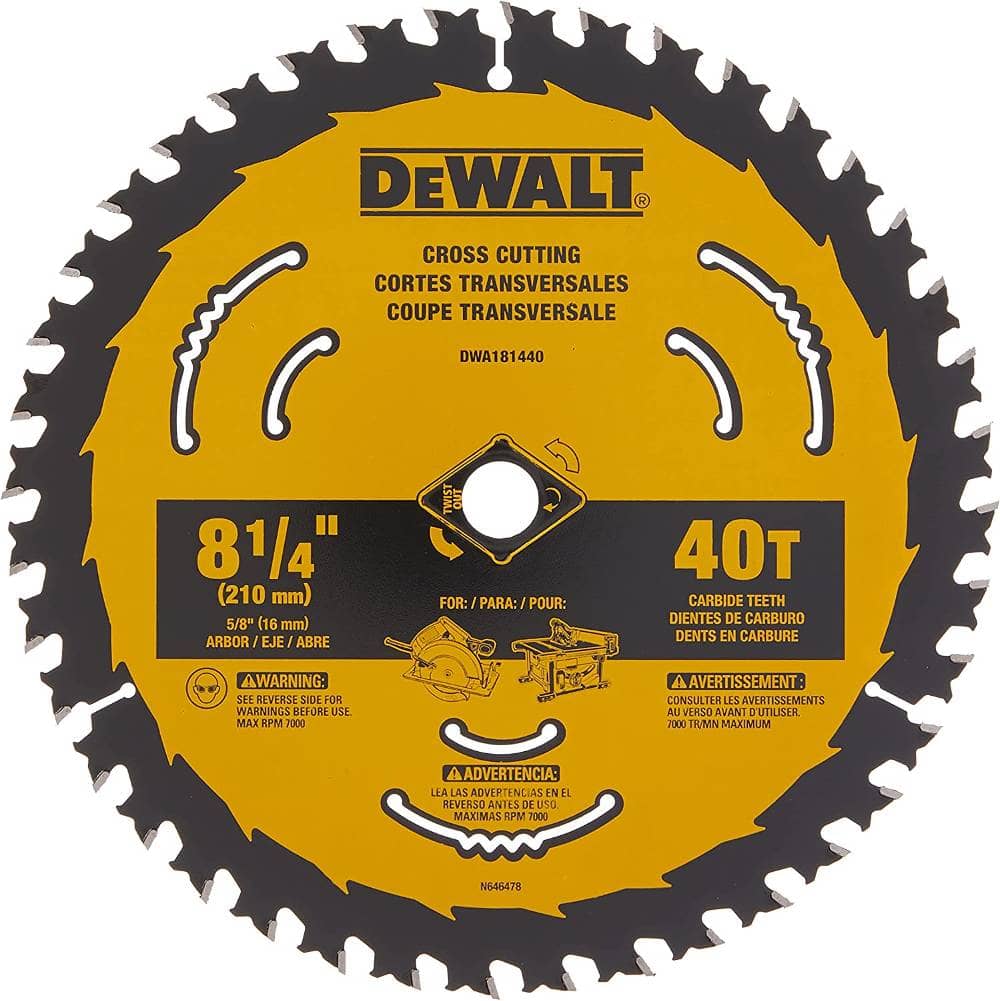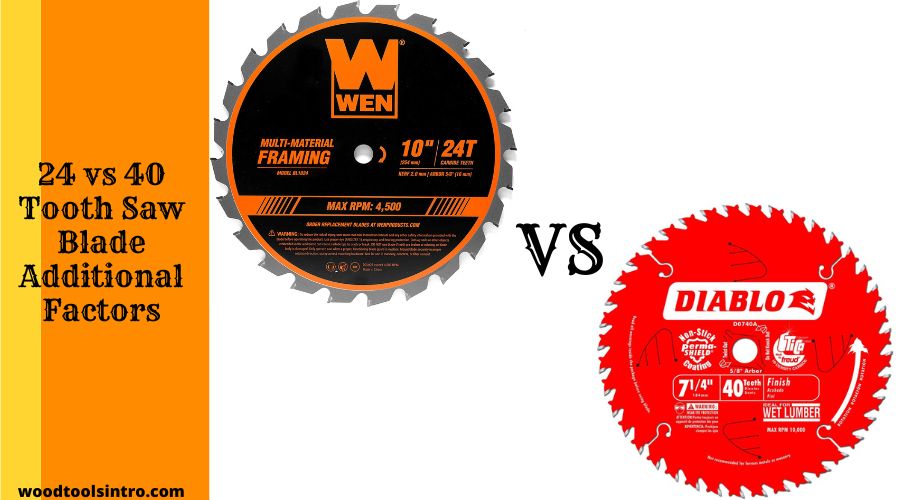The saw blade’s tooth significantly impacts your overall sawing projects. As a result, a typical blade can’t help you get your job done. Even I’ve seen many people who can’t decide what to choose among 24 vs. 40 tooth saw blades.
Here, I’ll share their characteristics, how they work, and their noticeable differences. Stay tuned!
What Tooth Count Means?
In simple words, tooth refers to the sharp and pointy objects of a saw blade designed to cut or smash different materials.
And the tooth count means the actual number of teeth included on the blade. Depending on the model, you can get multiple types out there.
For instance, a saw blade of 10-inches generally features 50 teeth. Also, a 12-inch blade consists of not less than 60 teeth in general.
What Are the Functions of Saw Blade Tooth?
In order to ensure smoother and more even cuts, the saw blade tooth plays a significant role. That’s why your blade can make more precise cuts if it includes more teeth.
In contrast, a saw blade with fewer teeth can eliminate more material. Each has its own specialties.
24 Tooth Saw Blade

What Is A 24 Tooth Blade Used For?
Note that a 24-tooth blade is commonly known as a 10-inch “ripping blade.” As the name suggests, it assists you in ripping several types of materials without much effort.
Moreover, it highly suits rough carpentry. So, a 24-tooth blade has excellent speed yet lags in accuracy.
How It Works?
In a nutshell, a 24-tooth ripping saw blade runs quickly to cut up metal, wood, or such objects following a specific direction.
It rotates in such a way that each tooth directly points to the material you want to cut. And yes, you’ll find it faster than the 40-tooth saw blade.
40 Tooth Saw Blade

What Is A 40 Tooth Blade Used For?
Unlike the 24-tooth blade, 40 tooth blade is noticeable on a 12-inch saw blade that is ideal for ripping and combination cuts. The best use of such a blade is to cut plywood, melamine, and such objects.
Due to its extended number of teeth, users can find it comparatively less speedy yet more precise than the 24 tooth.
How It Works?
In general, 40 teeth saw blade rotates a bit more slowly than the 24 teeth. That said, it allows you to have more quality cuts and to finish with its précising spinning directions.
So, if accuracy matters most, any carpenters will undoubtedly find it a great choice.
24 vs 40 Tooth Saw Blade Additional Factors

Let’s get straight into the common differences between the 24 and 40-tooth saw blades without further ado. Thus, you can decide which one you’re searching for –
Note: Get deal on 24 & 40 toothed blade in black friday this year.
Number of Teeth
This is the first place where anyone can notify the difference between the 24 and 40-tooth saw blades. Because of the extended number of teeth, the 40 teeth will be noticeable on the bigger saw blade that is of 12-inches or so.
Gullet Size
If you observe your saw blade, you may notice a tiny space in each tooth’s front. The depth and size of it determine the quantity of wood you’re allowed to take off while cutting up.
As a rule of thumb, if your saw blade has more teeth, then it will have a short gullet size. In this case, the gullet size of a 24-tooth saw blade will be larger than the 40 teeth.
Hook or Rake Angle
A rake or hook angle’s standard range can be anywhere around 5-20 Degrees (+). On rip blades, you can notice a positive angle of around 20 degrees in terms of pulling the material into the saw blade, especially the wood, melamine, and so forth.
Kerf
In a word, kerf refers to highlighting the overall thickness of a cut made by a saw blade. It is usually measured in mm, and the range between 1.5-3 mm is counted thin among carpenters.
Generally, you won’t notice any significant difference between 24 and 40 in terms of the kerf, as the standard width is around 1/8”.
Flat Top
The flat top, also known as flat top grind (FTG), is utilized mostly on rip blades to ensure quicker and more efficient cuts. In this case, a 24-tooth saw blade may include a flat top to be compatible with ripping.
Furthermore, a flat top aids in general cutting purposes as well.
Bevel Angle
For scoring the wood or other such materials, teeth beveling on your saw blade plays a key role. 15, 10, and 20 degrees; these are some of the common angles you may notice around the blade.
In general, you can make more precise cuts in case the bevel angle appears greater. As a result, you’ll find the 40-tooth saw blade’s angle greater compared to the 24-tooth saw blade.
Last Words
Comparing 24 vs. 40-tooth saw blades makes it easier to decide which one can be your ultimate cup of tea! I’d say go for the 24-tooth blade if speed matters most.
In contrast, if you’re hungry for accuracy, simply rely on the 40 tooth for its extended teeth.
Related Articles
- Black friday table saw
- Table & miter saw blade comparison
- two blades on one table saw
- Universality of miter saw
- Black Friday Chainsaw

I am Imtiaj Islam. I am a wood working enthusiast, having 6 years of experience in carpentry work. I have a BBA graduate degree from Chittagong College. I got vocational training on wood works from Korean Polytechnic out of the quest and zest he has for carpentry as well. I take several wood projects and keep testing different woodworking tools for comfortable and perfect work. I just love playing with woods and machines.
